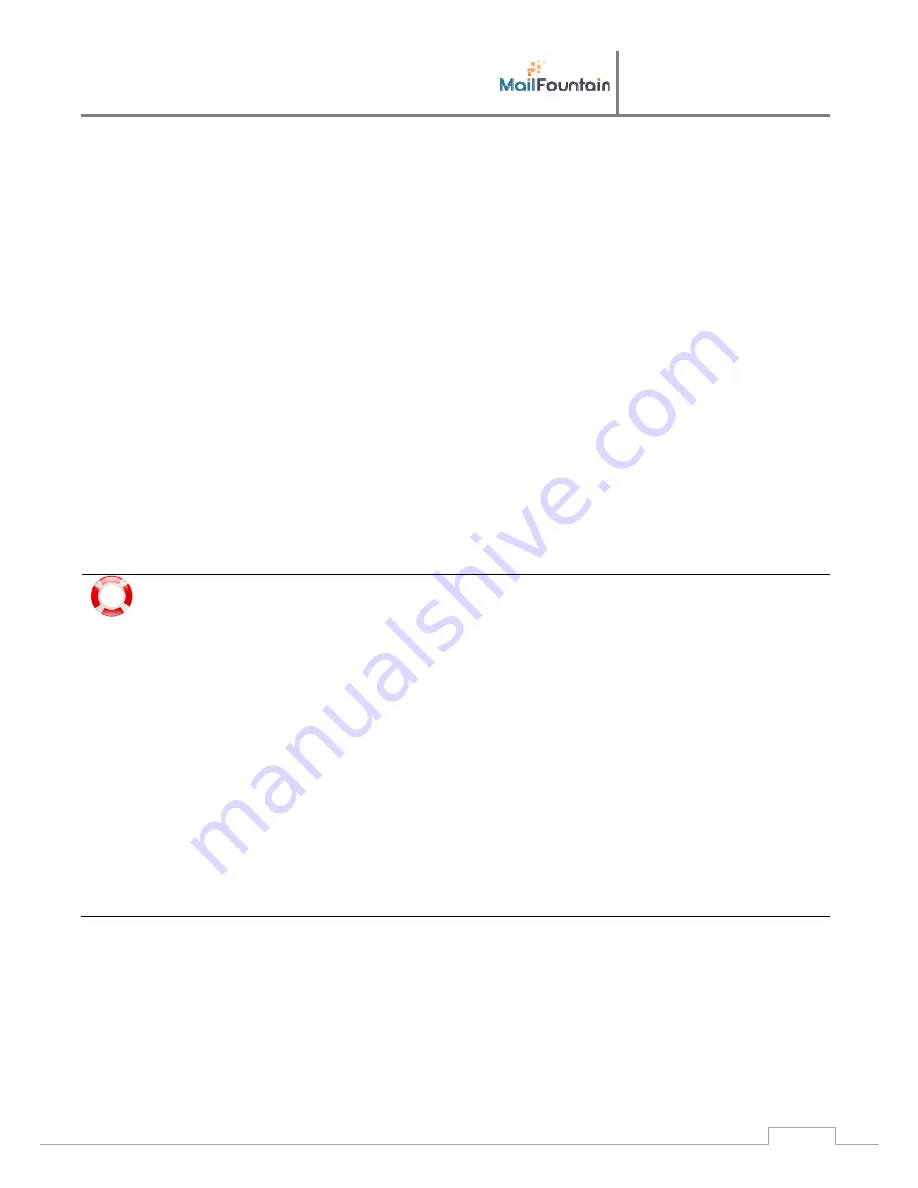
User
manual
S100, S200, M500
21
For
the
following,
we
will
consider
that
your
DNS
is
correctly
configured
and
that
"mail.
your-domaine.tdl
"
is
set
the
correct
IP
address
of
your
Internet
connection.
You
must
create
a
new
POP3
account
with
the
following
parameters:
User information
Name
Free
text
generally
corresponding
to
your
First
and
Last
Name
E
‐
address
Your
e
‐
address
Server information
Account
type
POP3
Incoming
server
mail.your
‐
domain
‐
name.tdl
Outgoing
server
(SMTP)
mail.your
‐
domain
‐
name.tdl
Login information
User
name
Your
full
e
‐
address
(
very important
)
Password
Your
account
password
defined
on MailFountain
Moreover,
it
is
essential
to
enable authentication for outgoing mail server
(an
option
is
usually
in
the
advanced
settings).
And
finally,
do
not
require
encrypted
or
secured
authentication,
it
is
currently
incompatible
with
MailFountain.
While
testing
your
account
if
you
get
a
connection
error,
it
may
have
2
main
origins:
1)
The
DNS
is
not
configured,
or
simply
the
spread
of
its
configuration
via
Internet
is
not
yet
over.
For
check
it,
open
a
command
prompt
and
type
"nslookup
mail.your
‐
domain
‐
name.tdl"
and
verify
that
the
IP
address
returned
corresponds
to
yours.
2)
Your
router
does
not
re
‐
route
a
connection
from
the
LAN.
Indeed,
using
the
address
"mail.your
‐
domain
‐
name.tdl”,
you
actually
go
to
the
public
IP
address
of
your
Internet
connection.
But
accessing
to
MailFountain
requires
that
the
routing
rules
of
ports
on
your
router
are
applied
and
the
router
redirects
the
request
to
MailFountain
(see
chapter
6.2.2.3
Ports to redirect
).
Unfortunately,
some
routers
can’t
re
‐
route
a
request
from
the
LAN
(whereas
if
the
request
came
from
the
Internet,
it
is
of
course
no
problem).
The
solution
is
to
use
the
local
IP
address
of
the
MailFountain
instead
of
«
mail.your
‐
domain
‐
name.tdl
».
What
makes
this
only
works
if
the
computer
is
on
the
same
network
(fixed
workstation
for
example).
In
the
case
of
a
laptop
is
more
problematic.
A
workaround
is
to
define
2
accounts
with
different
settings:
one
running
from
the
local
network,
the
other
from
the
Internet.
But
ideally,
you
must
either
configure
the
router
if
possible,
or
change
it.
6.5
Send a e-mailing
A
e
‐
mailing
is
a
list
of
addresses
grouped
under
a
name
with
itself
as
an
e
‐
mail.
For
example
the
list
of
all
your
customers
and
prospects
interested
in
receiving
a
newsletter,
will
be
named
newsletter@my
‐
company.biz
6.5.1
Create a e-mailing
In
the
left
menu.
Click
on
the
Mailing
list
entry.
You
will
see
a
list
of
all
existing
mailings.


















